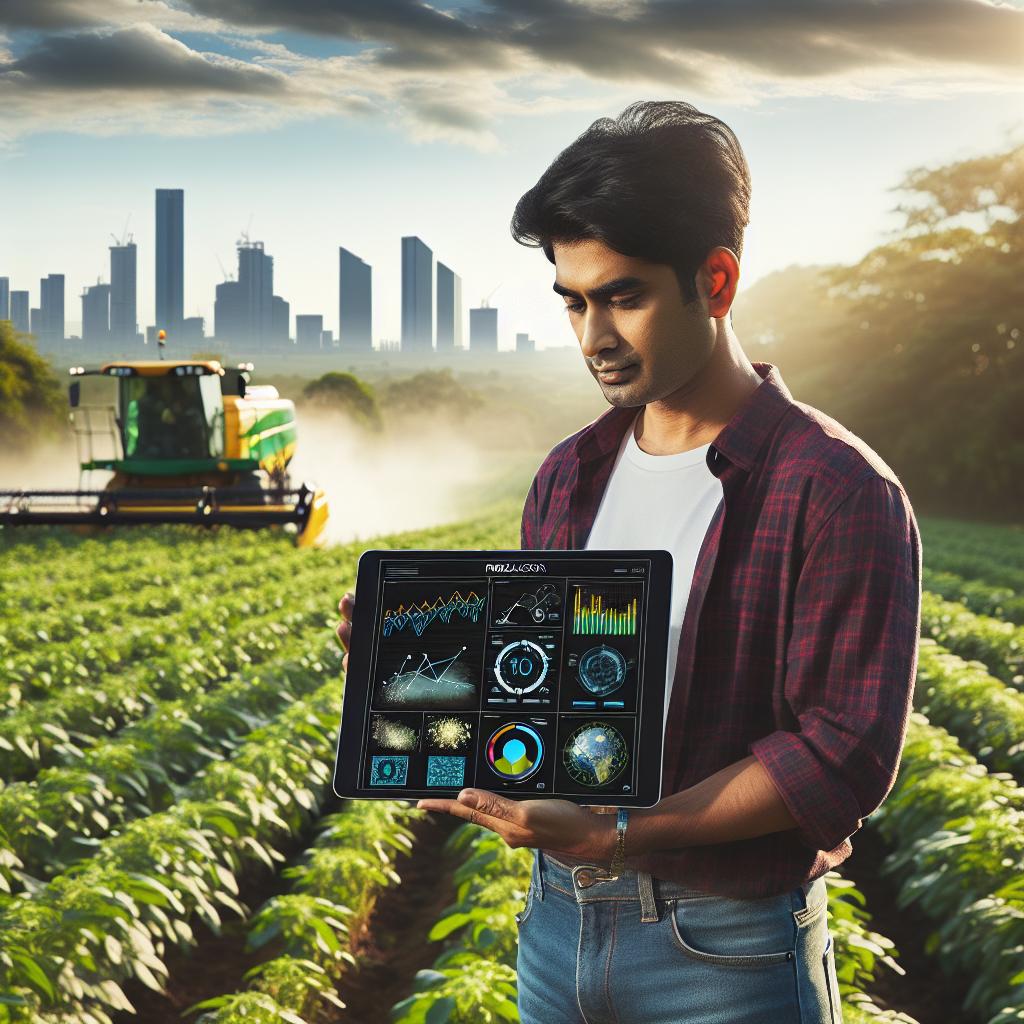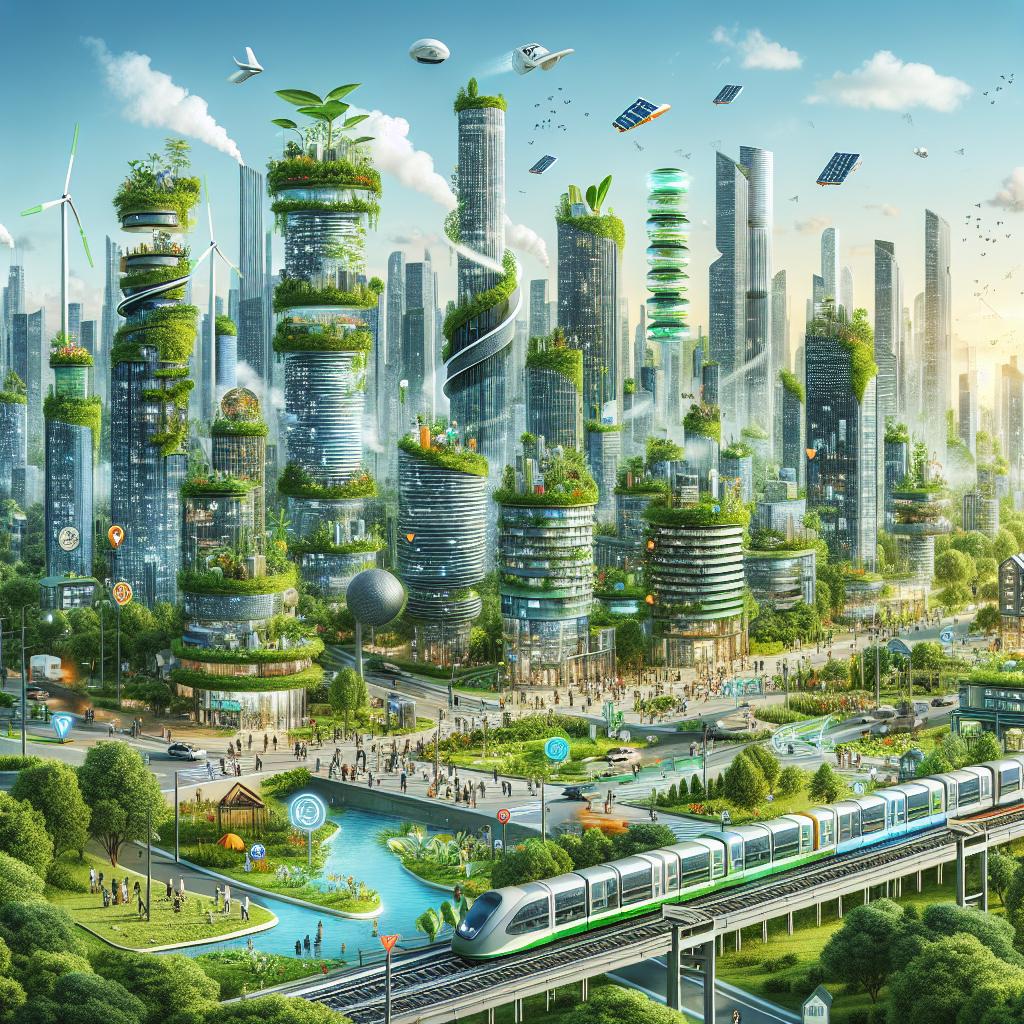This post may contain affiliate links which means I may receive a commission for purchases made through links. Learn more on my Private Policy page.
Investing in Innovation: The Path to Farm Profitability
In the heart of agricultural landscapes, where tradition meets toil, modern technology is quietly revolutionizing the way we cultivate the land. Gone are the days when farming relied solely on manual labor and instinctive practices; today, an array of cutting-edge tools and systems is available to optimize every aspect of farming operations. From precision agriculture that fine-tunes resource allocation to automated machinery that speeds up labor-intensive tasks, modern farm technology presents a compelling opportunity for farmers seeking to elevate their profitability. This article delves into the myriad ways these advancements not only enhance productivity but also contribute to sustainable practices, making the case for why investing in modern technology is not just an option, but a necessity for the future of farming. As we explore the financial and operational benefits of embracing innovation, it becomes clear that the farm of tomorrow is not just a vision—it’s a reality waiting to be cultivated today.

Harnessing Precision Agriculture for Enhanced Crop Yields
Embracing cutting-edge technology in agriculture enables farmers to make data-driven decisions that can significantly increase productivity. **Precision agriculture** uses high-tech tools such as drones, satellite imagery, and IoT devices to collect and analyze vast amounts of data on crop health, soil conditions, and weather patterns. By leveraging this information, farmers can optimize every aspect of their farming operations, ensuring that resources are used more efficiently. For example, targeted application of fertilizers and pesticides can lead to improved crop health and reduced costs, ultimately translating to a more sustainable and profitable enterprise.
Implementing modern farming tools leads to substantial benefits, including:
- Improved resource management: Farmers can monitor water usage, soil nutrients, and crop growth in real time.
- Higher crop quality: Tailored interventions based on precise data enhance the quality of produce.
- Increased resilience: Understanding environmental variances helps in minimizing losses due to adverse conditions.
| Technology | Benefit |
|---|---|
| Drones | Provide aerial imagery for crop monitoring |
| Soil Sensors | Measure moisture and nutrient levels |
| GPS Mapping | Pinpoint areas for targeted treatment |

Integrating Automation to Reduce Labor Costs and Increase Efficiency
Integrating automation into farming practices can dramatically transform operations, leading to significant reductions in labor costs while enhancing overall efficiency. By adopting advanced technologies such as robotic systems, drones, and automated equipment, farmers can streamline tasks that traditionally required extensive human labor. **Not only does this lessen the burden on seasonal workers, but it also allows for more precise and timely interventions.** For example, automated irrigation systems can apply water only when necessary, conserving both resources and time.
Moreover, implementing smart technologies enables real-time data collection and analysis, providing valuable insights into crop performance and soil health. This proactive approach facilitates better decision-making and fosters a more productive farming environment. Consider the following benefits of automating farm operations:
- **Reduced labor dependency**: Fewer employees needed for manual tasks.
- **Increased operational precision**: Enhanced accuracy in planting, watering, and harvesting.
- **Time savings**: Automation allows for multiple tasks to be performed simultaneously, leading to quicker turnaround times.
| Benefit | Impact on Profitability |
|---|---|
| Labor Cost Reduction | Lower operational expenses |
| Higher Yields | Increased crop production |
| Resource Optimization | Maximized use of water and fertilizers |

Utilizing Data Analytics to Make Informed Farming Decisions
Embracing data analytics can transform the landscape of farming by enabling farmers to make decisions grounded in real-time insights rather than guesswork. By employing software that analyzes variables such as soil moisture levels, weather patterns, and crop health, farmers can tailor their practices to maximize yield. Key components of effective data utilization include:
- Precision Agriculture: Analyzing data to apply water, fertilizers, and pesticides precisely where needed reduces waste and enhances plant growth.
- Market Trend Analysis: Utilizing past sales data and current market trends to predict prices helps farmers decide when to sell produce for maximum profit.
- Resource Management: Monitoring resource allocation through data analytics helps minimize costs and improves efficiency in operations.
The integration of advanced data analytics tools can lead to significant improvements across various farming practices. Real-time data collection and analysis enable farmers to see fluctuations in growth and proactively address issues before they escalate. Consider the following table that highlights the impact of data analytics on key farming metrics:
| Metric | Before Data Analytics | After Data Analytics |
|---|---|---|
| Yield per Acre | 1500 lbs | 2000 lbs |
| Water Usage | 10000 gallons | 7500 gallons |
| Pesticide Costs | $1200 | $800 |
Such advancements make the business of farming not only more sustainable but also more profitable, allowing farmers to reap the rewards of their hard work while safeguarding the environment for future generations.

Exploring Sustainable Practices Through Technological Innovations
Investing in modern farm technology sets the stage for **increased efficiency** and enhanced **productivity**. Tools such as precision agriculture, automated machinery, and data analytics empower farmers to make informed decisions that directly impact their bottom line. By utilizing **drones** for crop monitoring or **IoT sensors** for soil health, farmers can identify issues early and apply resources effectively, reducing waste and maximizing yields. Moreover, technologies like **GPS-guided tractors** lead to reduced fuel consumption and minimize the environmental footprint, creating a dual advantage of sustainability and cost-effectiveness.
The financial benefits extend even further with the implementation of **blockchain technology** in supply chain management, providing transparency and traceability that enhance consumer trust and improve market access. Additionally, **smart irrigation systems** help conserve water—a vital resource—while ensuring that crops receive just the right amount of moisture. To illustrate the potential impact on profitability, consider the following table demonstrating cost savings through technology integration:
| Technology | Cost Savings | Efficiency Boost |
|---|---|---|
| Precision Agriculture | 20% | 30% more yield |
| Automated Machinery | 15% | 25% labor savings |
| Smart Irrigation | 10% | 40% water conservation |
Q&A
Q&A: Why Investing in Modern Farm Technology Can Improve Your Farm’s Profitability
Q1: What exactly is modern farm technology?
A1: Modern farm technology encompasses a range of innovative tools and systems designed to enhance agricultural practices. From precision agriculture software and drones to IoT sensors and automated machinery, these technologies help farmers optimize their operations, reduce waste, and improve overall productivity.
Q2: How can modern technology actually increase profitability on my farm?
A2: By implementing modern technology, farmers can make more informed decisions leading to higher yields and lower costs. For instance, precision agriculture allows for targeted application of fertilizers and pesticides, minimizing waste and maximizing crop health. Automated systems can also reduce labor costs, enabling farmers to do more with less.
Q3: Is there a significant upfront investment involved in adopting these technologies?
A3: While the initial investment in modern technology can be substantial, many farmers find that the long-term savings and increased productivity far outweigh those costs. Additionally, various financing options, government grants, and subsidies are available to assist farmers in adopting these technologies.
Q4: Can small-scale farmers benefit from technological advancements?
A4: Absolutely! Modern farm technology is not just for large-scale operations. Many tools are designed specifically for small- to medium-sized farms. For example, mobile apps for crop management, efficient irrigation systems, and compact machinery can help smaller farms operate more effectively and sustainably.
Q5: What are some examples of technologies that have shown clear financial benefits?
A5: Some notable examples include drones that monitor crop health and identify issues before they escalate, soil sensors that optimize watering schedules, and advanced data analytics platforms that forecast yields and market trends, helping farmers make strategic decisions that bolster profitability.
Q6: Do these technologies require specialized skills to operate?
A6: While some technologies do require a learning curve, many modern farm tools are designed to be user-friendly. Online tutorials, workshops, and customer support are often available to help farmers get accustomed to new systems. Investing time in education can pay off significantly in terms of efficiency and profitability.
Q7: Are there any risks associated with adopting modern farming technologies?
A7: As with any investment, there are risks involved, including technological malfunctions or the potential for rapid obsolescence. However, the benefits often outweigh the drawbacks. Conducting thorough research and opting for reliable technologies can mitigate these risks and ensure a positive return on investment.
Q8: How do modern technologies contribute to sustainability in farming?
A8: Many modern farm technologies promote sustainability by optimizing resource use and minimizing environmental impact. For instance, precision irrigation systems conserve water, while data analytics can identify the most efficient use of fertilizers, reducing runoff and its effects on local ecosystems. Sustainable practices often translate into cost savings and improved profitability over time.
Q9: What’s the first step a farmer should take if they’re interested in investing in modern technology?
A9: The first step is to assess your specific needs and challenges. Start by identifying areas where technology could enhance efficiency or address problems. Research potential solutions and consider consulting with agricultural experts or successful peers who have made similar investments to gain insights and guidance.
Q10: In your opinion, what is the future of farming with modern technology?
A10: The future of farming is likely to be increasingly integrated with technology, making agriculture more efficient, sustainable, and profitable. Innovations such as artificial intelligence, robotics, and advanced biotech will continue to evolve, helping farmers adapt to climate change, resource constraints, and a growing global population. Embracing these changes will be crucial for long-term success in agriculture.
Final Thoughts
embracing modern farm technology is no longer just an option; it’s a necessity in the pursuit of a prosperous future for agriculture. As we’ve explored, the integration of innovative tools and practices can enhance productivity, reduce waste, and optimize resource management, all of which contribute significantly to a farm’s bottom line. While the initial investment may seem daunting, the long-term benefits—ranging from increased yields to more sustainable practices—far outweigh the costs. By staying informed and adaptable in an ever-evolving industry, farmers can unlock new levels of profitability and ensure their operations thrive in a competitive market. As the sun sets on traditional methods, a new dawn emerges for those willing to harness the power of technology, paving the way for a more sustainable and lucrative agricultural landscape. Your farm’s future could well depend on it.
This post may contain affiliate links which means I may receive a commission for purchases made through links. Learn more on my Private Policy page.

